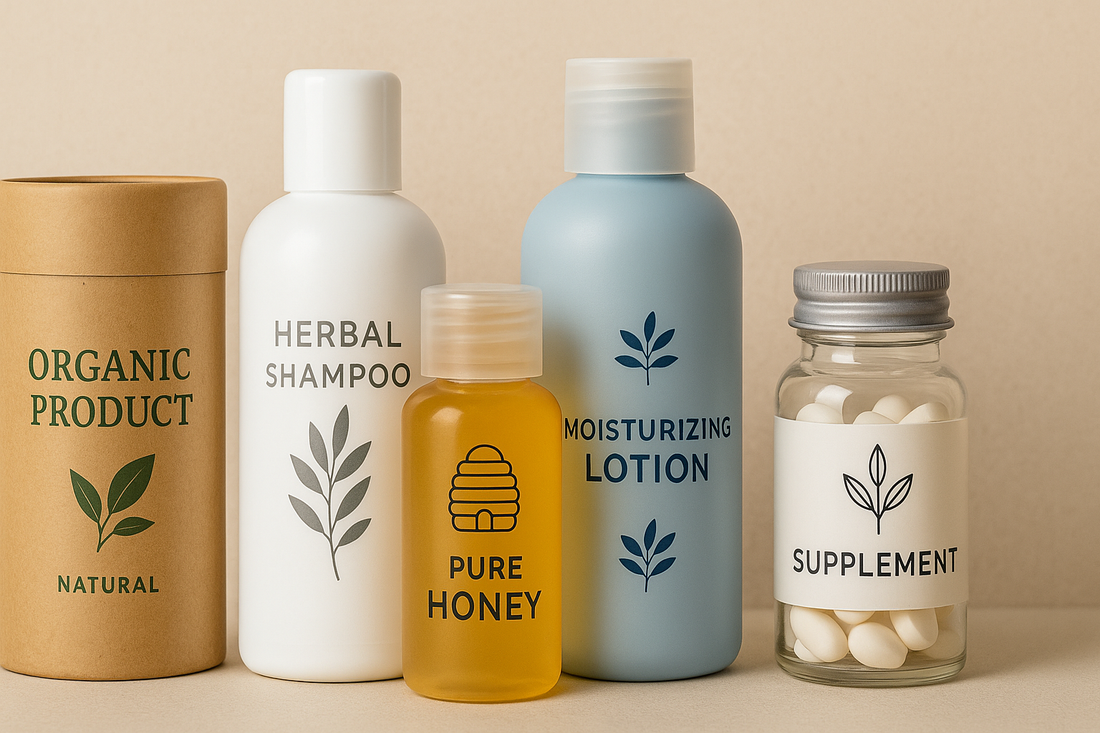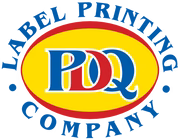
How to Choose the Right Label Material: Paper, BOPP, PE, PP & More
Share
When it comes to product labels, the material you choose is as critical as the design. The wrong material can cause peeling, smudging, or poor adhesion; the right one will look good and last through your product’s life. In this blog, let’s walk through the most common label materials—paper, BOPP, PE, PP, and more-what their strengths and trade-offs are, and how to pick the right one for your product. Plus, I’ll show you how PDQ Labels can help you get custom, high-quality labels for your brand.
Why the Material Matters
A label does more than show your logo or ingredients. It needs to perform under real conditions:
- Will the product be exposed to moisture, condensation, or water?
- Will it sit under sunlight or UV exposure?
- Does it need flexibility (for squeezable bottles, curved surfaces)?
- Does it need chemical, oil, or solvent resistance?
- What is your budget and sustainability target?
If a label fails (peels, smears, fades), it undermines your branding and may cost you rework or replacement.
Label material (the “face stock”) is one of three primary layers—the face stock (printable surface), the adhesive (glue), and the liner (release backing). Each plays a role, but the face stock usually dictates overall performance.
Common Label Materials: Pros, Cons & Use Cases
When choosing your label material, it’s important to understand the strengths and trade-offs of each type. Here’s a breakdown of the most common options:
🟤 1. Paper Labels (Coated, Gloss, Matte, Textured)
Pros:
- Affordable and easy to print.
- Great for indoor use and products not exposed to moisture.
- Available in many finishes — glossy, matte, or textured (like linen or felt).
Cons:
- Not water-resistant or durable in humid conditions.
- Can wrinkle, tear, or fade over time.
- Adhesion can weaken with condensation or oils.
Best for:
Food packaging, boxes, tags, wine and spirits (especially when laminated), and other short-term indoor labels.
⚪ 2. BOPP (Biaxially-Oriented Polypropylene) Labels
Pros:
- Highly resistant to moisture, oils, and many chemicals.
- Excellent color reproduction and print clarity.
- Thin yet durable, maintaining flexibility for curved containers.
Cons:
- Slightly more expensive than paper.
- Not always recyclable depending on your region.
Best for:
Cosmetics, personal care items, beverages, cleaning products, and food containers.
🔵 3. PP (Polypropylene) Labels
Pros:
- Flexible and durable; good for curved or squeezable surfaces.
- Resistant to chemicals and moisture.
- Available in clear, white, or metallic finishes.
Cons:
- May require specialized adhesives or coatings for best performance.
- Similar cost level to BOPP films.
Best for:
Flexible packaging, tubes, and containers that need strong adhesion with a clean finish.
⚫ 4. PE (Polyethylene) Labels
Pros:
- Excellent flexibility, ideal for squeezable bottles or soft packaging.
- Resistant to water and most mild chemicals.
- Can stretch without tearing easily.
Cons:
- Less rigid and strong than PP or PET.
- May deform or stretch under heavy handling or heat.
Best for:
Squeeze bottles, flexible pouches, or containers that require labels to bend and flex with the surface.
🟣 5. PET (Polyester) Labels
Pros:
- Extremely durable and resistant to heat, chemicals, and UV light.
- Long-lasting and ideal for outdoor or industrial use.
- Retains print quality even under harsh conditions.
Cons:
- Higher cost than paper or PP/BOPP labels.
- May be excessive for short-term or low-stress products.
Best for:
Industrial equipment, automotive labels, outdoor signage, and durable product identification tags.
Quick Takeaway
If your product is indoor and low-moisture, paper labels may be all you need.
For moisture, oil, or chemical exposure, go with BOPP or PP.
For squeezable or flexible packaging, PE is your friend.
And for industrial or outdoor use, PET stands strong.
Why PDQ Labels Is a Good Partner
If you’re looking for a reliable supplier of quality labels in Australia, PDQ Labels (https://shop.pdqlabels.com.au/) is a solid choice. Here’s why:
- Wide material selection — Paper, BOPP, PP, PE, and specialty materials for all industries.
- Custom printing — Upload your artwork and choose size, finish, and quantity.
- Quality assurance — Each label is printed for durability and color accuracy.
- Local expertise — Australian-based service means faster turnaround and support.
Explore label material samples or start your custom order today at PDQ Labels - your trusted source for durable, professional-quality labels in Australia.



